Wouter Kingma is a filmmaker, a photographer, an author, a producer and an adventurer. He wears many hats within the creative industry and loves getting called upon for unique ideas and epic concepts. They all seem to overlap. They fill his passport with stamps and gets Wouter to tell real stories, which is what life is all about really; storytelling with different media, although film & photography will always lie at the heart of what he does. Adventure plays a starring role in all his projects (work & play) and pretty much sums up how he does business. Wouter is also a conversation partner for both international lifestyle brands and agencies, helping them to create content that’s real.
Producing media that an audience can relate to and stirs up their lives. He particularly loves seeing how his work on athletes gets people off the couch and to make positive changes in their lives. Wouter started blogging in 2009 and it's become a source of inspiration, knowledge, images and stories. As mentioned, everything boils down to storytelling. Recently, Wouter has been producing more ‘behind the scene’ videos.
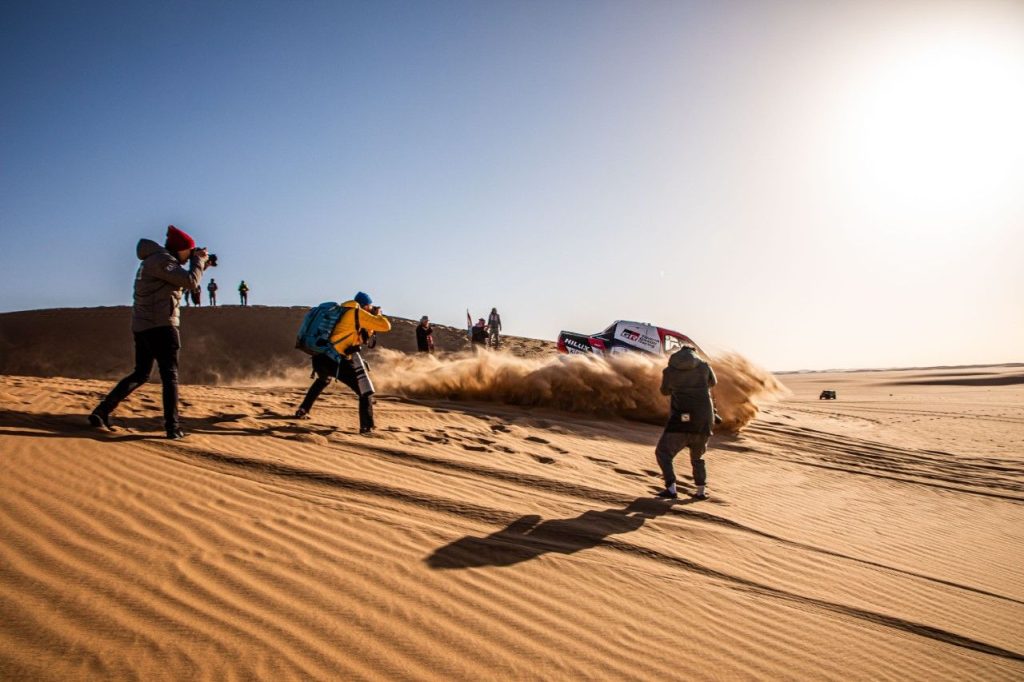
They are a great way to share the love for what he does. There is rarely a boring day!
Wouter Kingma 
On the first of January I find myself making an early departure from our family ski trip in the Austrain Alps. Leaving the snow behind, seeking a completely different adventure in the wilderness of Saudi Arabia. After 40 years of exploring Africa and South America the iconic Dakar Rally has embarked on a new chapter in the Middle East, within its host country Saudi Arabia. I’ve spent part of my expat childhood living in Saudi Arabia (1983 to 1985) and from 2003 frequently been travelling there for work gigs. The magical Kingdom, how I call it, has gone thru an array of developments and changes. Specially the growth spurt under the leadership of HH Crown Prince Mohammed bin Salman bin Abdulaziz has put Saudi Arabia in a global spotlight.
Bringing the epic rally to Saudi is just another great way to showcase the beautiful natural wonders they have on offer. I’ve seen lots of Saudi, mainly empty desert roads and flashy big cities, I even crossed the full country in 2019 with Khaled al Suwaidi who ran his 1755km pilgrimage to the holy city of Mecca. (https://wouterkingma.com/PROJECTS/Khaled's-Run-to-Mecca/thumbs). Over the years I was always moderately exciting about its landscape. Until…Yes! Dakar showed us all the good stuff by visiting all corners of this huge country. Stunning. Stunning. Stunning. From the Wadi Rum like mountains and ancient thumbs in the north to the breathtaking dunes in the south. It’s a gorgeous wilderness. Specially the mountains in the north are asking to be explored and climbed. Such a wild playground.
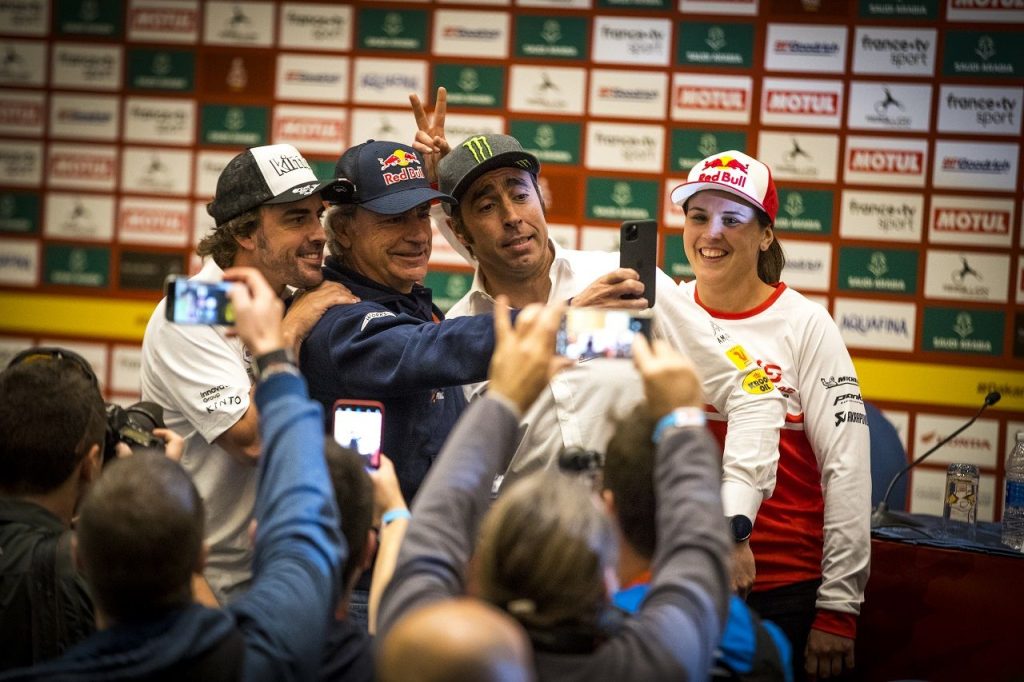
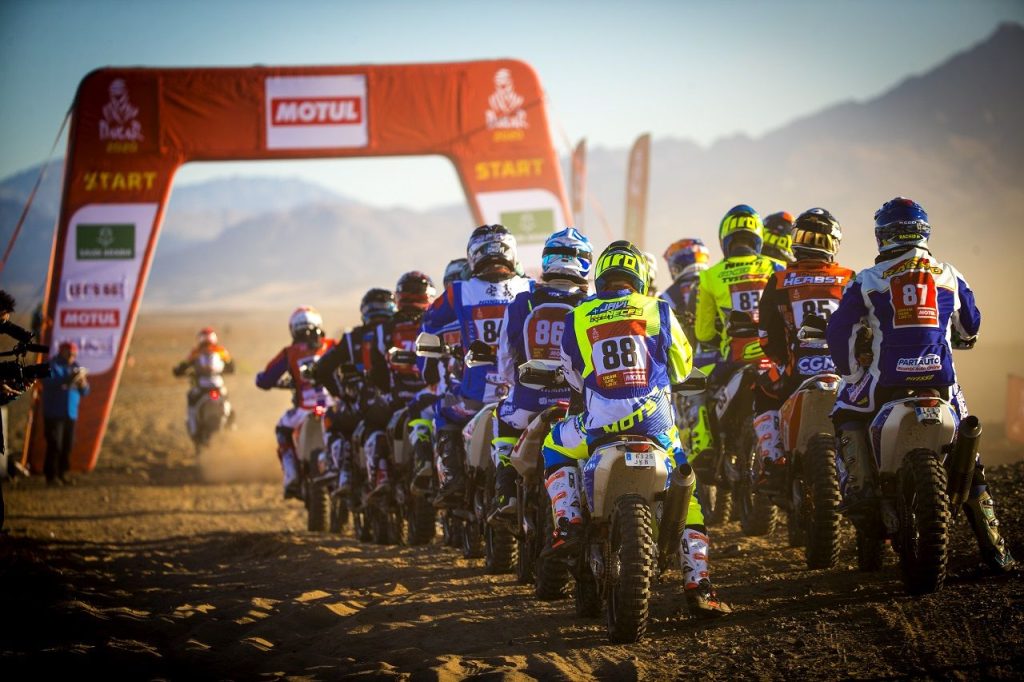
Only the best of the best athletes and petrol-heads come to race, win or play. Regardless of their goals they are all striving for the finish medal near the capital of Riyadh. I found the Dakar community super nice. A unique pack of individuals, all in it for the spirit of adventure and that bonds people immensely.Now what does it take to shoot a beast like the Dakar Rally? If anything, it’s good planning and access information. In parallel its working by (possibly bending…) the French rules set by the organizers ASO (https://www.aso.fr/en/). It’s an oiled machine that runs on clockwork like the Tour the France (also their event).
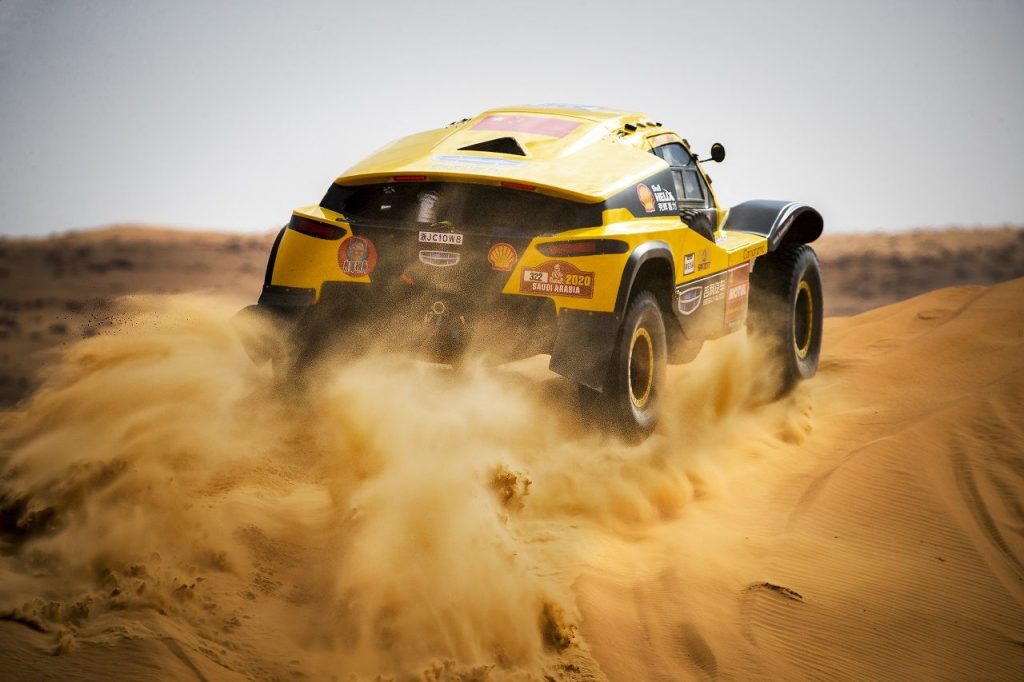
It works successfully yet it is hard to penetrate by outside creatives, specially me who seeks something different…. My first words of advice during registration was ‘Dakar doesn’t wait. So be ready.’ A message that set the pace and certainly lived up to its promise.The team at Professional Sports Group (http://www.profsports.com) made an engaging docu-series around the theme of #MySaudiDakar. I was stoked to be one of the selected few to share my personal experience. So, THIS is what it takes to capture the Dakar Rally.
Days start early, well before the crack to dawn, leaving camp in beefed up 4x4’s and solving the mystery game of location finding. Dakar is a fierce global competition and advance route info may benefit some, therefore no course info is shared in advance. For registered content makers there is a secret code group who, at the very last minute, receive just enough course info to than race thru the darkness trying to find a magical viewpoint, ideally with multiple angels to broaden the mix. It’s a stressful morning game of hide & seek racing against the clock of live rally route closure.
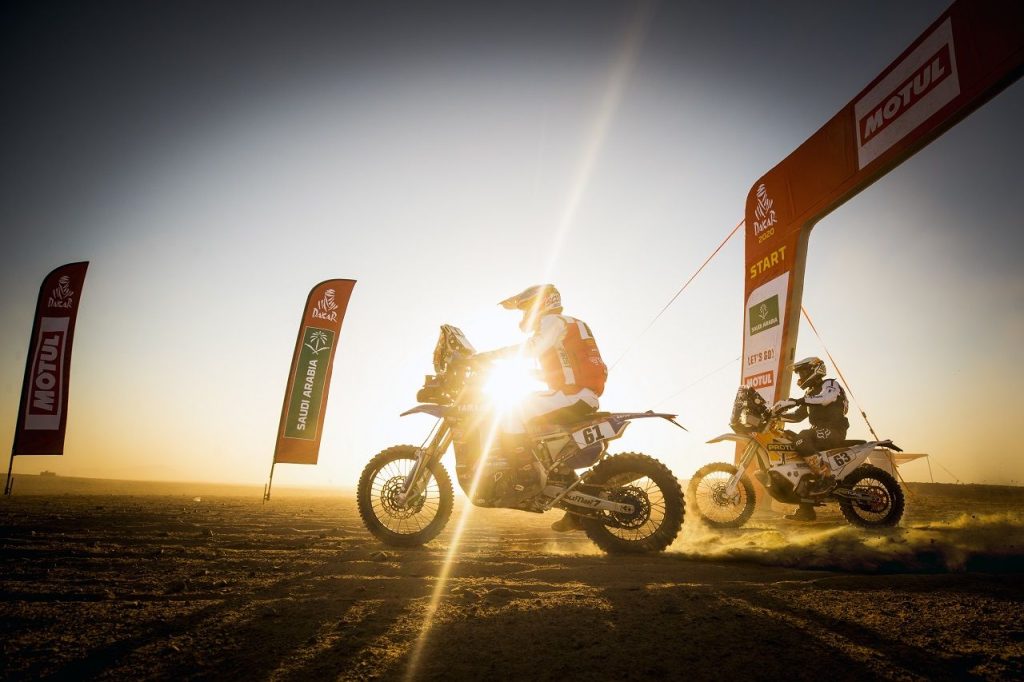
Once the race is live, it goes incredibly quick. First the motorbikes shoot by, followed by cars, side by sides and finally the monster trucks. In three hours they have all passed and catching up later in the day is near to impossible as 700km+ road transfers were not uncommon. Location finding in the mountains is a little easier as competitors should be on gravel roads, in the sand dunes however it’s a different story. In the desert there is only a mass of virgin sand, without any tire marks or indication where the rally route will be. The best tool is a good set of ears and fast legs. I had all my basic camera equipment in my f-stop backpack ready to unpack and start shooting. A nice feature about my Satori pack is that I access my gear from the backpanel, keeping the sand out and it quickly zips back up
Creating varied work is the icing on the cake! As I was feeding the official Saudi Dakar channels with fresh daily content my goal was to produce different types of images everyday. Yes the landscape changes over time, but the race is a repetitive format (at least visually). For those who are stuck in the process of shooting mixed work I’ll share my tips on how to keep on delivering varied magic. So what’s the spicy mix?
Admittedly some days were better than others. Weather, landscape, sun angle, deadlines and access had a big impact on how visuals worked. With most elements out of my control, there is still no option of returning to base empty handed. I had some days where the morning location just didn’t work and it is a tough call to leave early in the hope to catch competitors later in the day with better conditions. During the early mornings you get to see all competitors just after the starting line when they are close together in racing order. Later in the day they spread out massively leaving big waiting times in between. As mentioned good planning is key. The Dakar Rally camp (or bivouac as the Frenchies like to call it) is an interesting bubble. For photography, it’s a possible to get in close with international athletes and their crew, to pick up stories and hang out with follow creatives.
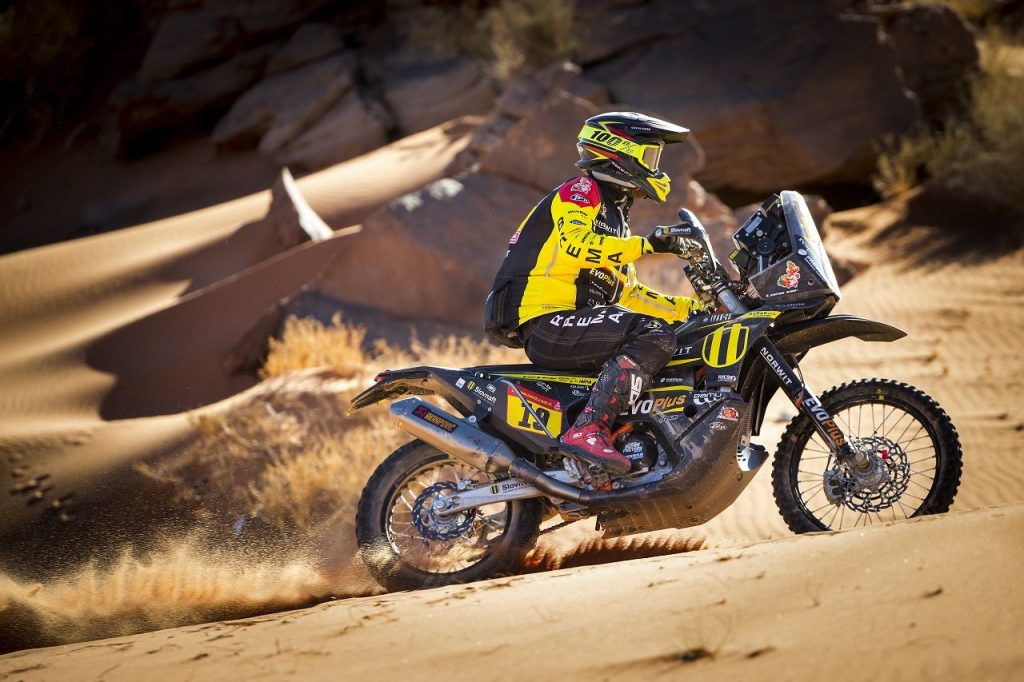
Camp is a daily roving village of 3,000 competitors, mechanics, medics, media and organizers who call it home. Assembled at a new place every day, the logistic behind the daily rebuild is mind blowing. During the day the competitors play and at night the mechanics get their time to work their magic. We sleep in tents or campervans, cramped in small spaces and there is no hiding from the noise. During the few much needed hours of sleep we are treated with revving engines, noisy power tools, banging hammers. A hidden treat at the Dakar Bivouac. I took little over 40,000 images, many went global thru the different social channels. There is talks about a coffee table book and keen to see what the final media clippings will be. I picked my top 60 for my own website (https://wouterkingma.com/PROJECTS/My-Saudi-Dakar/thumbs), trying to find a balance between RAW action, stunning landscape, rich culture & hospitality and the human spirit of the Dakar Rally. Got check it out.
No surprises, days were intense. Just imagine spending three wild hours shooting on location than drive a distance similar from Paris to Milan. Upon arrival edit your content, upload the best select, eat followed by a noisy night sleep. The next morning wake up super early do it all again including the drive back to Paris. And repeat this 14 days in a row… It’s nuts! I did about 9,000km of travelling, mainly by car with an occasional helicopter ride. A big shout out to Meshari my personal driver for getting us thru the course safely! Despite the hard work it was an epic experience. I loved it. As a team we had a blast. We over-delivered on content and stories so all big smiles in the end! Would I do it again? For sure, book me in! I love this kind of expedition style content creation, looking for real RAW stories and constantly being on the move. I seem to be at my best with very little sleep, limited showers and no comfort. Always up for an adventure.
Camera Kit:
Ryan Richardson is an outdoor and adventure photographer and filmmaker from Calgary, Alberta. Visual storytelling is a relatively recent passion of his. He actually got into travel and the outdoors long before he ever picked up a camera. At some point, he just found himself experiencing some really cool places with some really rad people and visual storytelling just seemed like the best format to share his experiences. Since then, his camera has been his ticket to some of the most remote corners of the world.
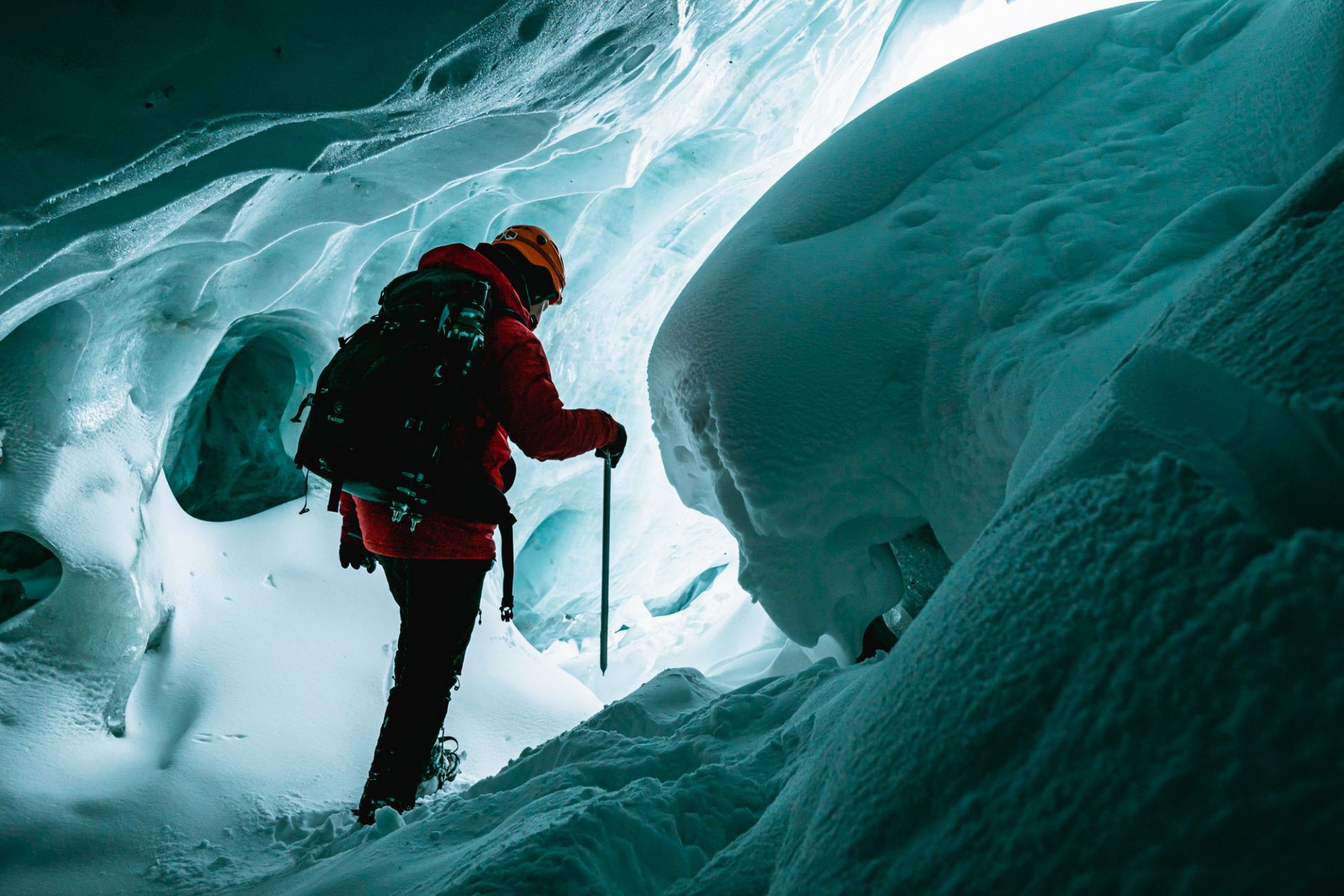
One of the coolest parts about being a visual creative is that you get to collaborate with some really talented people. It’s such a joy being able to partner on projects and tackle brand new ideas with other creatives who might look at a scene differently than you would. It helps you constantly rewire and rework your approach to creating frames and images, ultimately making you better.Watching other outdoor photographers produce their work is also exceptional. It never ceases to amaze me, seeing the lengths outdoor professionals will go to get their shots. People just see the final image, rarely do they see the hard work that goes into creating the images. I think if more people knew what these talented pros go through to get their images, they’d be surprised and appreciate the image that much more.
Getting The Shot is all about highlighting that process. It’s a look behind the curtains of what a niche outdoor lifestyle photographer does to get their shots. Because there are so many facets of outdoor lifestyle photography, we’re really focusing on specific “subcategories” like photographers who shoot climbing, trail running, wildlife, skiing, etc. It’s a lot more dynamic for the viewers if we can display all kinds of outdoor photography.Our goal is to make each episode basically feel like you’re just hanging out with these photographers. We’re stripping it down, we don’t want the episodes to feel too polished. I think that keeps the entire project more fun and fluid too. Because Getting The Shot is a passion project, viewers are basically watching the “director’s cut”. It frees everyone up to be as creative as they like without the fear of potentially missing high risk shots. We get to gamble with tougher objectives and shots that might be higher stakes for commercial shoots but ultimately low risk for Getting The Shot.
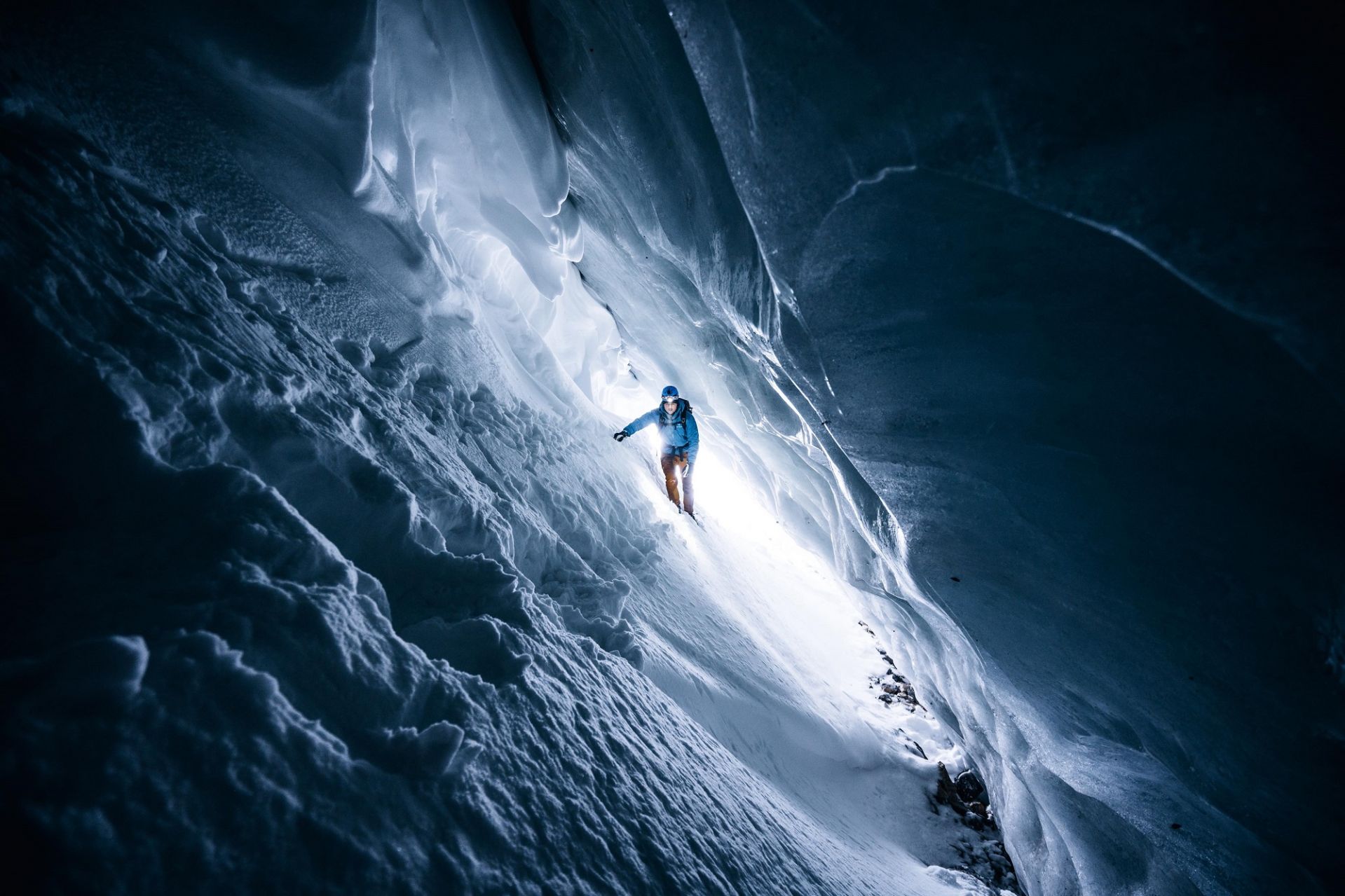
Our first episode takes place in Alberta. We thought it would be fitting to begin the series from our hometown of Calgary. I’ve been paying close attention to a crazy talented photographer, Stevin Tuchiwsky since 2014. Stevin is also based in Calgary and I asked if he would be our first guinea pig for this series and he jumped in head first. Having someone as talented as Stevin jump on board really put some wind into our sails. I told Stevin I’d like to shadow him as if he’s just going out and taking some photos for himself on the weekend. I knew that he had some pretty cool locations in mind so we planned a little bit ahead of time, mostly for logistics, safety, and timing. Otherwise, everything was just “as it happened”. Nothing was rehearsed. Everything was just happening and I think that comes across pretty naturally in the first episode.I’m really happy with how it turned out because I felt like Stevin had so many great gold nuggets and he was really informative and educational, yet it didn’t feel like a “lesson” or a “class”. It just felt like going to take photos with a mentor or teacher.
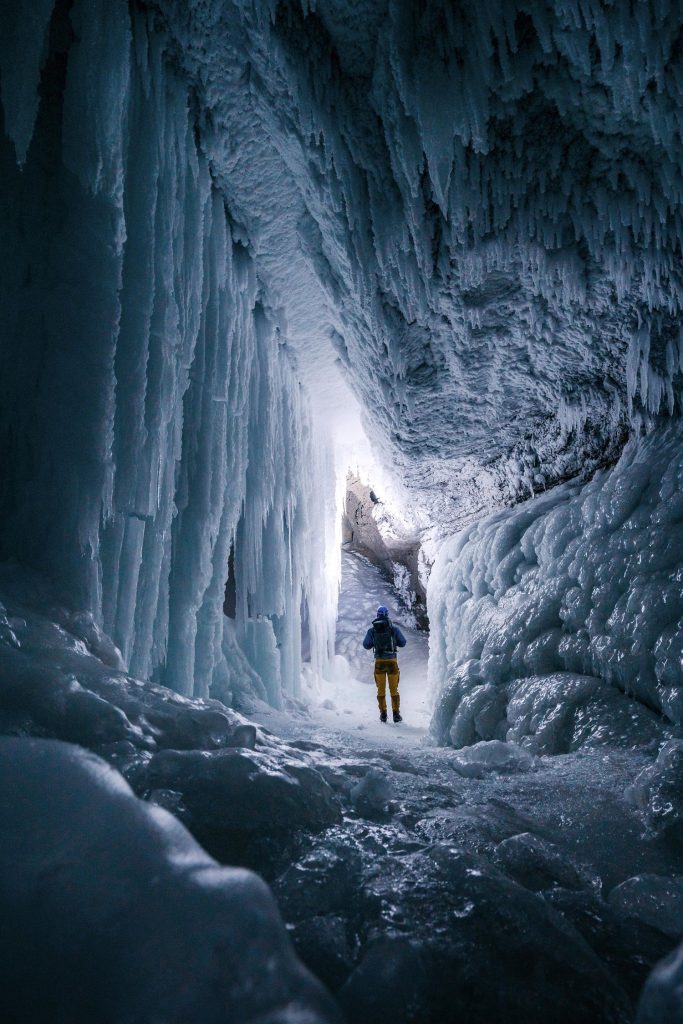

The unique thing about outdoor filmmaking is that your camera gear is just part of the equation. Firstly, safety equipment and outdoor apparel that will keep you protected from the elements is actually the foremost important thing. Coming home alive, and with all of your digits is the first objective, especially in remote and freezing landscapes like we were all weekend.A solid pair of gloves, a toque, extra puffy jacket, helmet, crampons, and ice pick are all the first pieces of gear to check off. Once all of those essentials are in my pack (or on my pack) I throw in all of my camera essentials next. My camera essentials include a Sony mirrorless body with a 24-70 F2.8 and the other as a backup. For video I usually shoot cropped which makes the 24-70 more like a 35-105mm.On my Sony, I have a Rode Mic Pro Plus shotgun mic and a Joby Gorilla 3k for stabilized handheld shots. I’m typically holding this in my hands the entire time. In my backpack, I have a Rode LAV Filmmaker kit, a Mavic Pro 2, a 10-14mm F4, 35mm F 2.8, a Zhiyun Crane 2, a MeFoto tripod, a GoPro Hero 7 and Hero 3 with spare batteries, a backup Sony mirrorless, a dozen sony batteries, an ND filter, and cleaning accessories.I also travel with a hard case that includes an Amaran Tri-8c light, extra tripod, spare parts for the Mavic Pro 2, charging cables, and remote charging devices.

I use this setup for 80% of the outdoor commercial and editorial assignments I shoot. There is definitely a place for large scale productions, however, traveling the world with 15 hard cases full of camera rigging isn’t for me. Small footprint media production is more agile, less expensive, it’s also a lot less stressful. It is also almost always the only way to shoot in difficult to access places, keep up with athletes, and keep a low profile. You can find more of Ryan's work on his website, Instagram and Facebook. The first episode of "Getting the Shot" is being premiered at 6pm MT on 25th of February 2020. You can watch it on the link bellow!

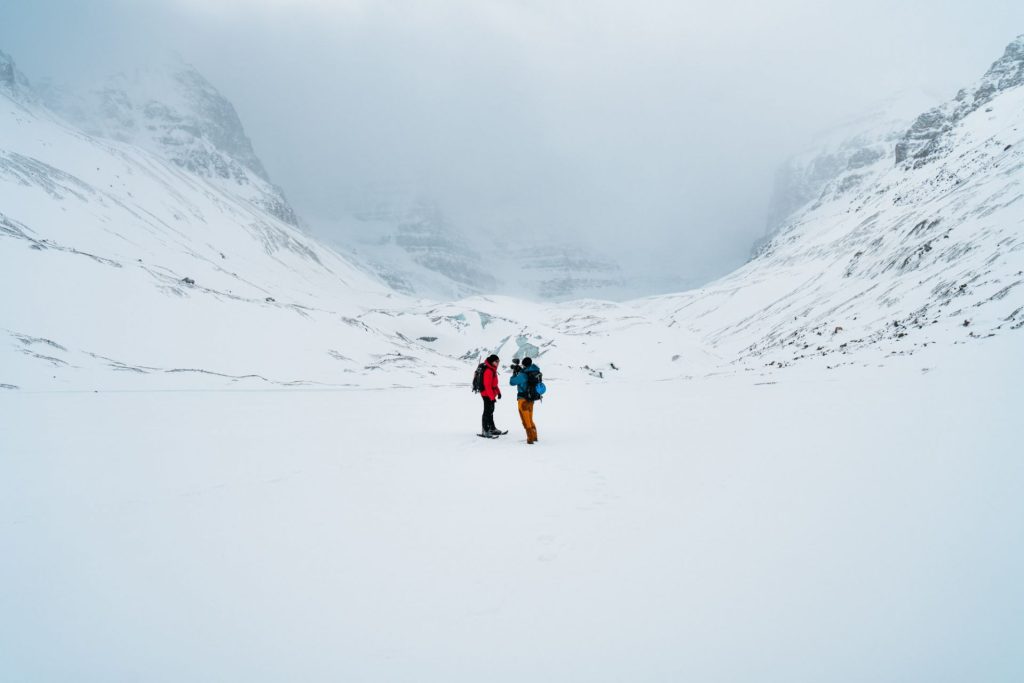


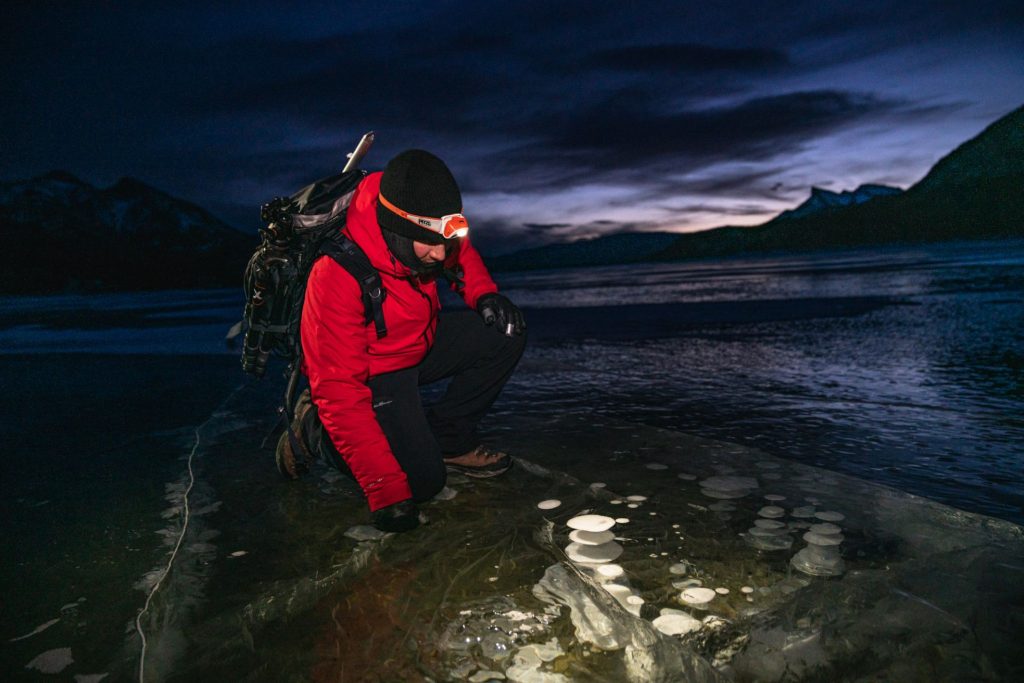

Jacob Moon is somebody that wants to live the adventure, not take pictures of somebody else's adventure. He doesn't like taking pictures of things that are staged, he likes to view his camera as a way of capturing a memory. His most valuable photos are those the captured that moment of time. Most of his photography is a mix of adventure, mountaineering, climbing, backcountry skiing, camping. Basically, taking pictures of the van life and telling his story. This story is exactly about that. Jacob wanted to isolate himself from the world and enjoy the wondrous adventures in Baja, Mexico.
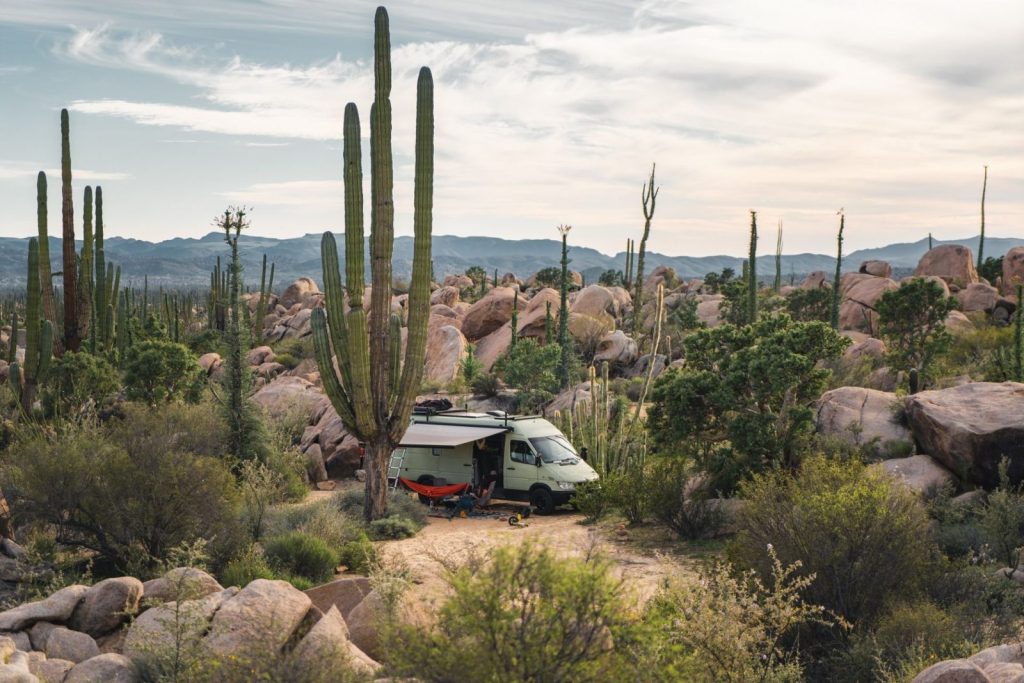
This adventure was about removing ourselves from the world basically. When you go to the Baja you hardly have any service and when you are in town you have very slow service, so you are never like sitting on the Internet and spending the entire amount of technology or doing that kind of stuff. Most of your time is spent away from the town on beautiful remote beaches with those that you love and totally disconnected from the world but reconnecting with the people that you are with. Just be in the moment not worrying about all and everything else going around you and the future. We camp on those beaches where you can have ten other people around you but still, you can find some beaches where there is absolutely nobody around. They are beautiful sandy beaches, there are lots of fishes, you can do standing paddleboarding while you are out there and watch the fishes. We also did wild tour because Sea of Cortez in Baja is a very diverse marine area. So my wife and I went out to see blue whales on the boat tour from a very tiny village that has 300 people in it, but we didn’t get to see the blue whale we ended up doing another tour on the other side in San Ignacio it’s a place where grey whales go to have birth caps and raise them. The whales are really used to the boats there so they will come to the boats and you can basically reach out and touch them.
This was amazing, and my daughter certainly loved it. She almost three years old but she started to really not only look with interest but express it with her words the interest that she has for the world around her it’s really amazing watching her just take interest in the whales and in the seashells. That was the big part of what we were doing on the beaches just walking around and find seashells. She loves seashells and she would bring them back and play with them. My daughter is disconnected from watching movies and all of that and we are playing together imaginary stuff which actually ended up helping her speak a lot as she was doing her imagined play and just spending time with us and not watching movies or anything like that. Her speech got improved significantly while on the trip. We always talk about this deal world where kids aren’t going to watch movies or stuff but it’s usually on places where we are on the phones sending emails, taking care of work and everything else, so just having those two things brought our family closer together and made the whole experience special.
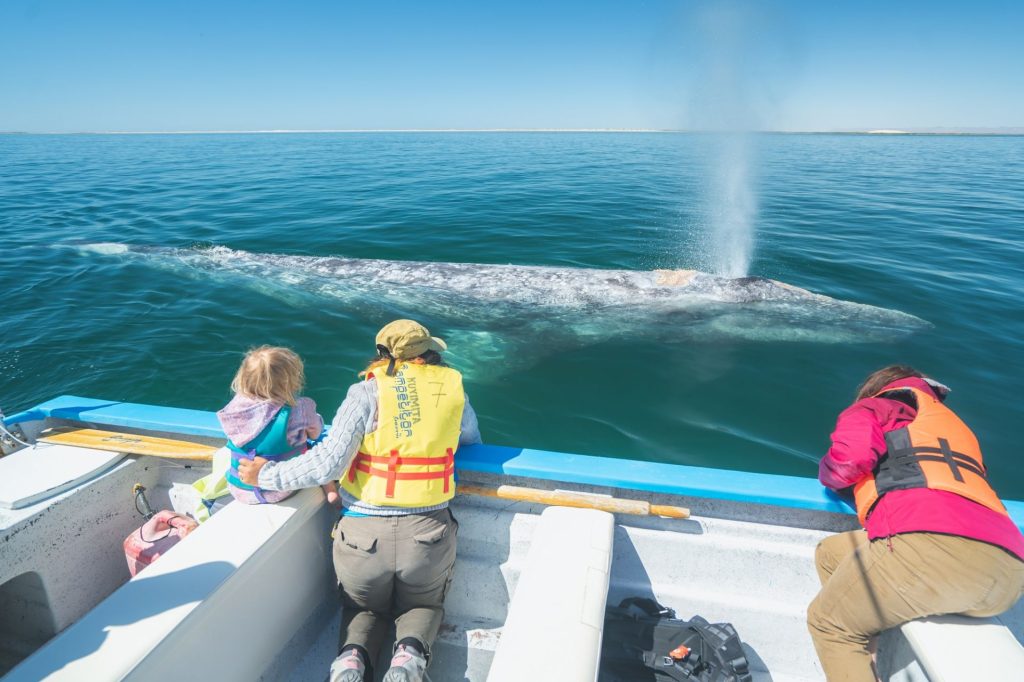

This adventure is important to me because it’s being connected with those you love to have our own vision of the trip and not be distracted by anything else. But what was also amazing about the trip is that we took our van unlike other places in the world where you go you fly but we took a van and everything in it. Taking our whole lives and just disconnecting from everything and reconnect between us. It was really nice to spend some time with the locals and we went to a lot of really small towns and the local kids will just come and play with our daughter and hang out with us.

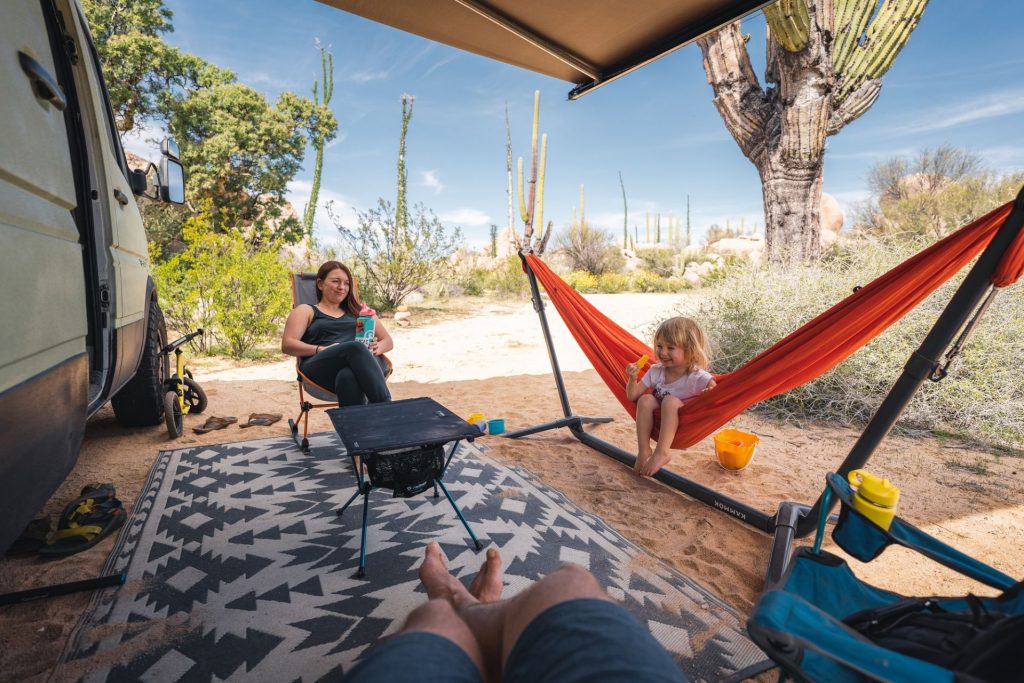
The biggest challenge was the wind, the rain is not a concern there the weather is beautiful 70-80F, nice water and pleasant but the wind can make the wave out the water and just make it unpleasant to go other there, there are no bugs to speak about because it’s desert. Luckily, we did not have any challenges with the van this time we actually overhauled our vehicle because on our last trip when we went down there we ended up having our transmission fell on us in a really small town where we at for 10 days and we were waiting for some parts to get our vehicle drivable where we will be able to drive 700 miles back to San Diego with 30miles/hour. So, we learned our lesson on our first trip that you definitely go down there prepared for breakdowns or stuff and you better know what you’re doing when you are going in the sand and soft dirt. Last year our vehicle got stuck where I feel half of it was stuck in a hole by the time, I finally got the village help to push It out and we built a rock ramp. It was quite challenging but I learned my lesson and this time I brought sand trucks, sand boards basically a board that you put under the tires and you drive on to shake off the sand. All in all, it was a beautiful smooth trip with little delays because of the wind. Baja is very remote, and you want to make sure that you know what you’re doing because if you don’t tab a lot of recourses.

The best moment of the trip was the bioluminescence. The bioluminescence was insane it was night and we went down there was hot and calm with is perfect for the bioluminescence plankton. It was dark and we got a new moon and by watching the window of our van we saw this twinkling in the water, and we were what the heck is that? So we got out and moved from the lights of the van and look out for a while and listen and it turns out that it was a fish jumping all throughout the bay and you could see as the fish jumping land back to the water it just makes this bright and blast of blue. And the fishes were jumping everywhere I don’t know if the bioluminescence makes them more active but the whole bay was just lit up and the bay is huge so as far as you can see there were splashes of blue going like twinkling lights and down to the shore. It was calm there was a little bit of lapping wave and the glow of the bioluminescence was just super blue and bright. We got on our paddleboards and as you paddle it looks like you have blue LED lights underneath your paddleboard and the water was shallow enough in most of the areas so you can see all the way to the bottom of the water as you are pedaling along in the mid darkness. I brought my daughter out in to it and she just had the greatest time in her life playing with that stuff and this was probably her most magical experience.
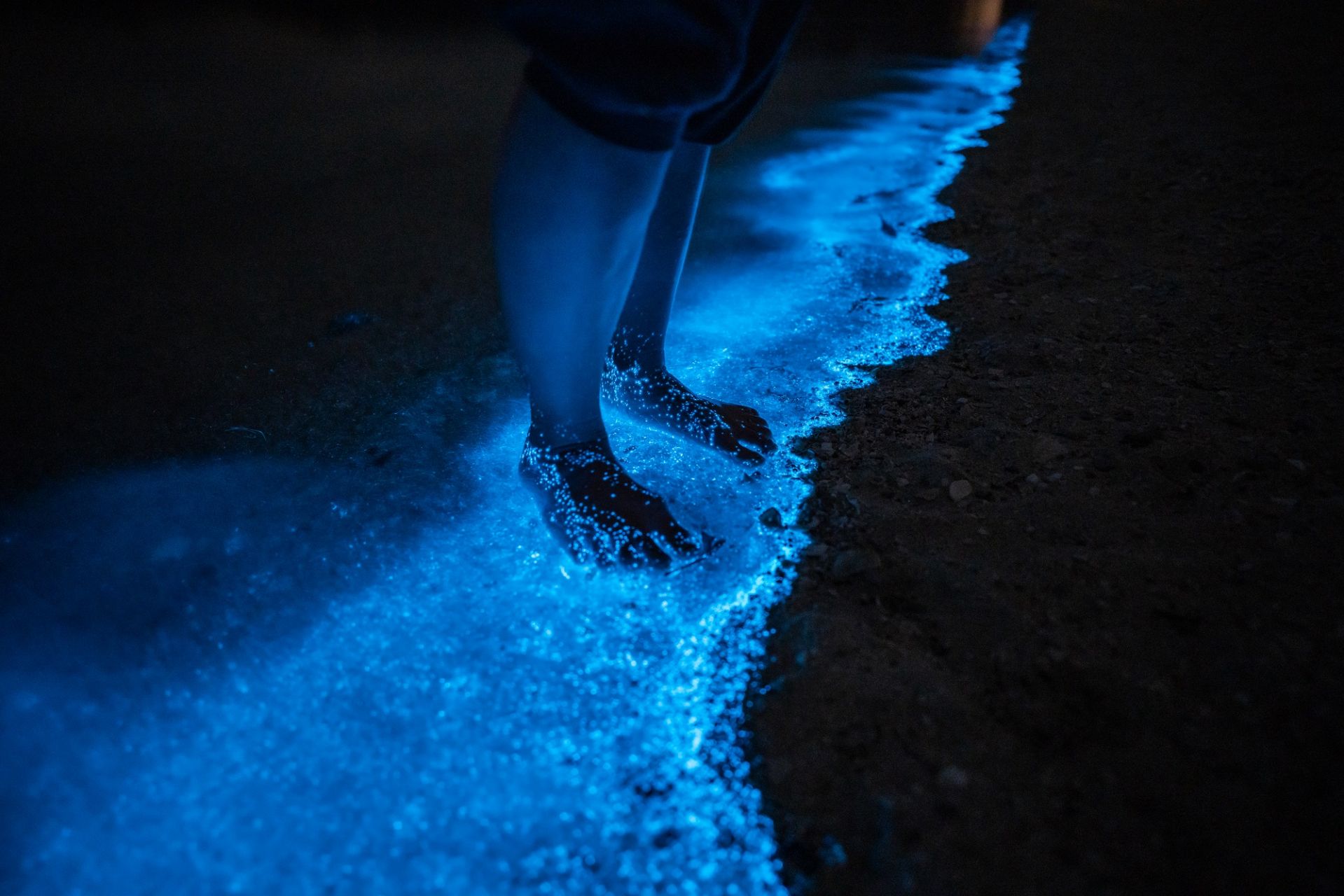

When traveling with a van you want to make sure your vehicle is reliable and that you are prepared to deal with sand if you don’t you going to have an interesting trip so take and something to reflate your tires, another thing is having something that gets a shade because it’s a desert and it’s hot and having a place to have shade it’s gold. The most important thing to eat a lot of tacos and don’t worry!
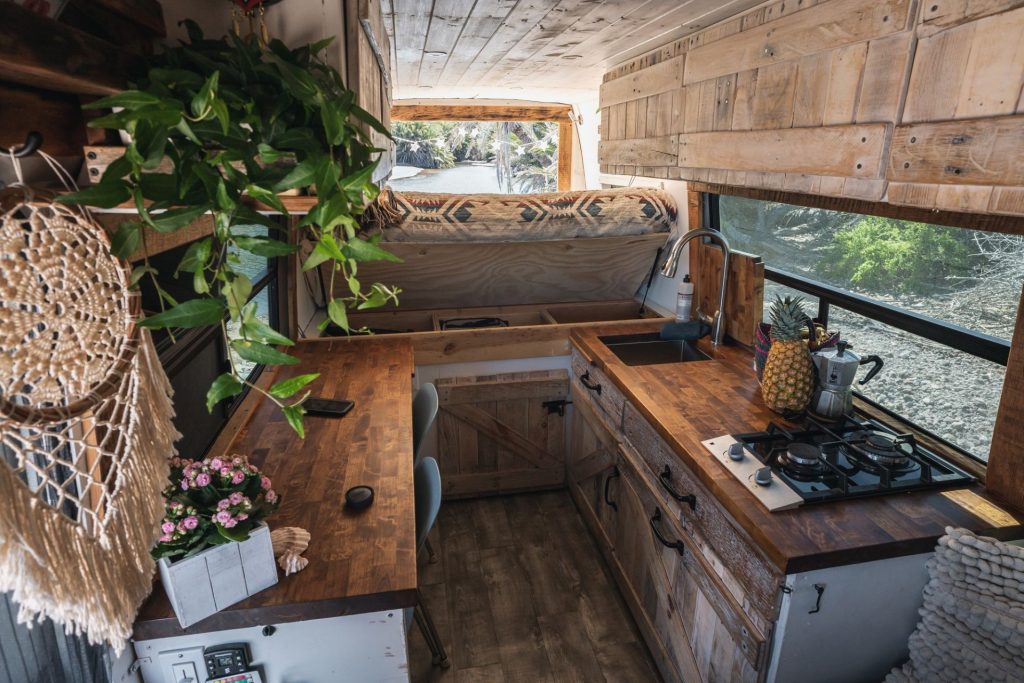
The camera gear that I use is Sony 7R3 camera that’s my go-to camera and bunch of navy Sony lenses that go with it, Mavic Air that I use to fly around and get some shots, GoPro Max and Hero 8. I am pushing myself to move my work a little bit in the video. To keep it all organized I have the Large Pro ICU and I have a camera compartment in my van, but I also have the Lotus pack for hikes or daily use downtown. My next plans are a Mexico trip, some adventures around Utah during April and May, second week of July trip to Alaska.
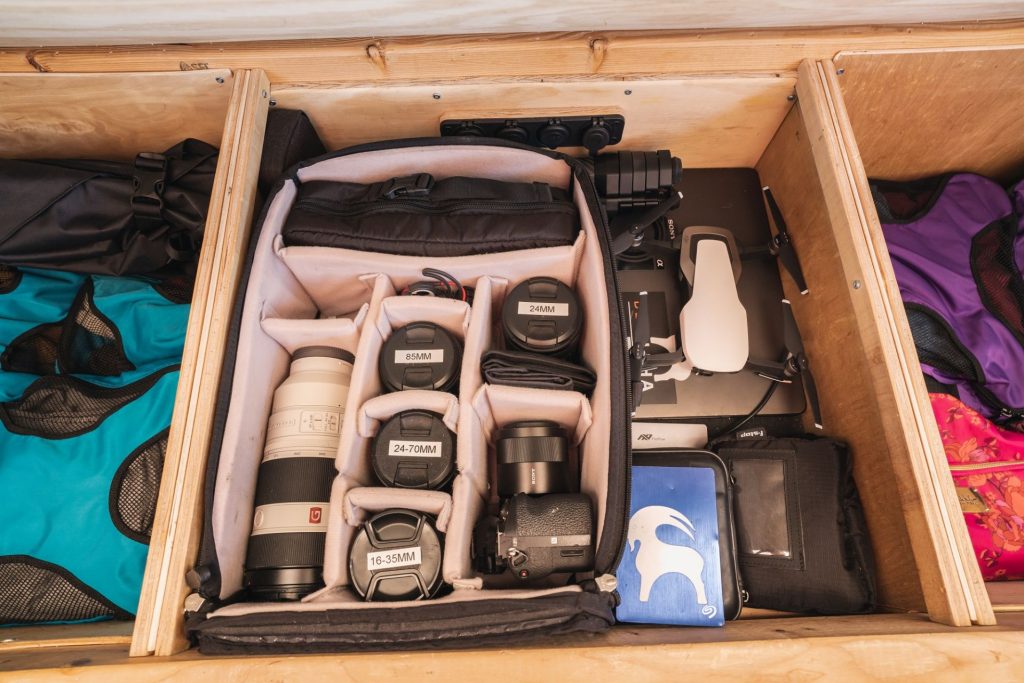

You can follow Jacob's adventures on his Instagram, Facebook, and website.
Crews for a Cause has been a labor of love. They started out of a desire to give back in a way that they uniquely could - by using the skills and connections they have built as professionals in the entertainment industry, to create short and impactful films for other non-profit organizations. There are so many amazing causes around the world that don’t have the know-how or the funding to produce their own content. That’s where they come in. With a growing list of over 300 volunteers from 15 countries, ranging from writers, producers, directors, and editors, to voice over artists, animators and graphic artists (among others), they pair grateful organizations and causes with entertainment professionals that truly believe in their mission.


We are proud to be part of the whole adventure and support their cause. We recently had the opportunity to support one of their Community Events called "Brews for a Cause". For them, this is the first of the many Community Events that they plan to organize around the world, and we are excited to be part of it.
We have a total of twenty projects in progress and completed in the little over two years we have been around. That means twenty amazing organizations that will have a way to promote themselves to the world, because of what we do. Here are a few examples of some projects we have are particularly proud of:
Georgia Climate Project is a multi-year effort by a statewide consortium of universities and colleges working with partners to improve understanding of climate impacts and solutions and lay the groundwork for Georgia and its residents to take effective, science-based action. What was amazing about this project was how our volunteers came together from all over the country and the world to help a relatively local initiative. The video was filmed in Georgia, edited in Texas, mixed in Connecticut, and had graphics done in Belgrade, Serbia!
Crews for a Cause 
Police Autism Community Training (PACT) was started by Abbey Love in Lexington, Kentucky. Abbey has a brother on the autism spectrum and has seen first hand the way police officers and first responders can misread situations and act inappropriately, sometimes dangerously towards people with autism due to lack of education on the matter. Although this cause is based in Kentucky, it was directed, filmed, and edited by volunteers in Los Angeles, and now being animated by a volunteer in London, England. Almost every volunteer involved with this project has a friend or loved one on the autism spectrum, which has made working on this project especially impactful. We are very excited for it to be finished soon, and will enable PACT to spread their message of awareness and education around the world.

Crews for a Cause 
Australia Wildfires (ongoing) - With the recent devastating bushfires throughout Australia, we’ve connected with nearly a half-dozen organizations dealing with the aftermath, and focusing on the human impact, loss of animals, volunteer firefighters, and the environment. The response from the international community to our call for help was incredible, with over forty individual volunteers stepping up to help from around the world. Over the next year, we plan to roll out the videos to help these organizations succeed in their goals.

Crews for a Cause 
Although our global community is a remote network, we place a lot of value in the passion of our Crew, and what makes them want to get involved in the first place. This sense of togetherness and comradery between like-minded people in our industry is one of the most empowering components of what we have achieved so far. To foster that idea, we have started to host community events that can get our local volunteers together for a night to meet, network, and have a great time.
Our first community event, “Brews for a Cause” which was supported by f-stop, was held in December in North Hollywood, California where we had over 60 people come from all over the Los Angeles area. We had music, games, and highlighted our different projects that our crew could volunteer for on the spot. Meeting so many people in our industry and getting them passionate about what we do was an amazing experience, and we look forward to expanding our events and hosting many more to come.As we grow our community by connecting with filmmakers all around the world and hosting more events, we look forward to continuing to bring a large number of meaningful opportunities to eager creatives looking to share their talents and collaborate with one another.
To learn more about Crews for a Cause, join their growing list of volunteers or submit a cause in need, visit www.crewsforacause.org.
With more than 20 years of experience in the world of photography, Staff Pro Antonio Liebana is one of the most prolific wildlife photographers in Spain. Check out what he has to say about his work, the gear he uses as well as his favorite locations.
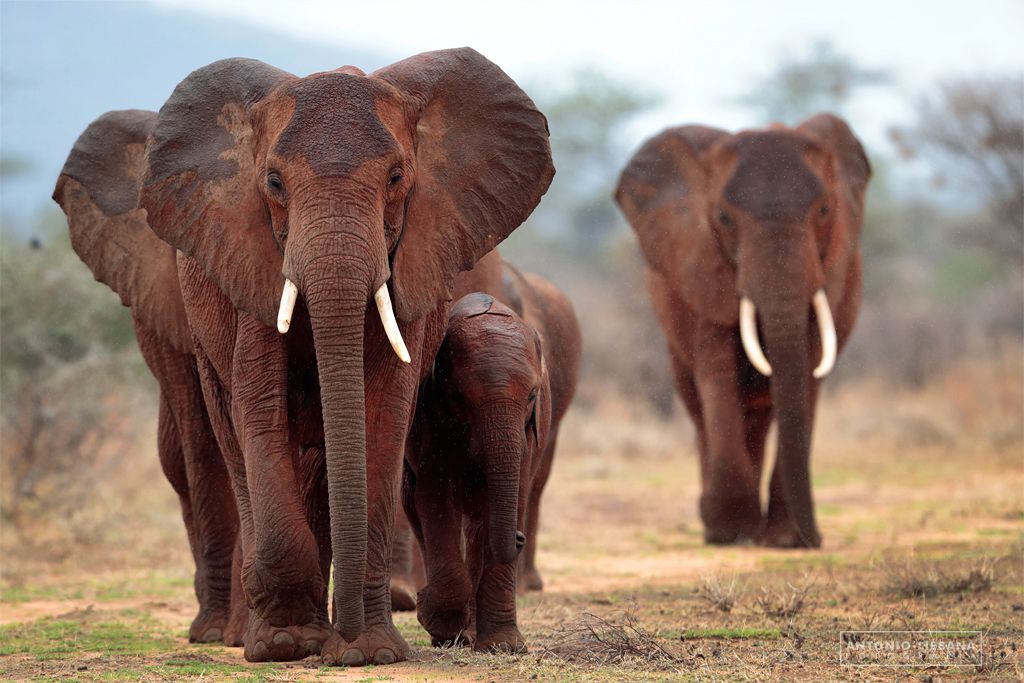
How do you prepare for a safari in Africa?
A safari to Africa works like any photography project. You have to plan and document the best times and places, in order to be able to photograph what you want. Despite trying to carry everything as tight as possible, something unforeseen can arise at any trip. Be forewarned that everything can change in seconds and be prepared for the unexpected is the best attitude.
Why Africa?
Africa is a magical continent and one of the last bastions of wildlife where you can find large mammals living as they have been doing for thousands of years. You can still see the great migrations of mammals and the wild day to day. In that environment, surviving next day is one of the biggest goals.

After so many trips, what was your main objective on this trip?
Finding new challenges, after more than 20 trips, is not easy. You are always trying to improve the images of previous trips. This is how new situations arise and you live moments in the wild that you may never live again. On this trip, the main objective was to photograph leopards lurking in search for food. It is an animal that is usually quite inactive and I wanted to try to get images of the leopard completely crouched looking for food with a stealthy attitude. It was one of the images that I lacked for a monographic article on the leopard.
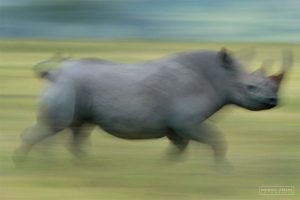
Photographing from a car is not easy. How do you usually work?
After managing to locate and track the animals, then having luck that the light is good and that the subject is doing something interesting, there is no room for error in the photographer's methodology of work.
To photograph from a vehicle, you need not just to have everything as organized and close as possible, but also to have a quick access. In moments of action where every second counts, the time decreases quickly. At the same time, all accessories need to be protected from the dust and constant rattle of the 4x4. On the last safari, I incorporated two elements that have made the sessions easier- the Navin and the Harney Pouch for extra batteries, memory cards and multiplier (tele-converter).
I used the f-stop Harney Pouch, placed it right in front of my seat, this way I speed up everything significantly. I placed the extra camera body in the Navin. This way I freed up a lot of space in my reduced workspace.
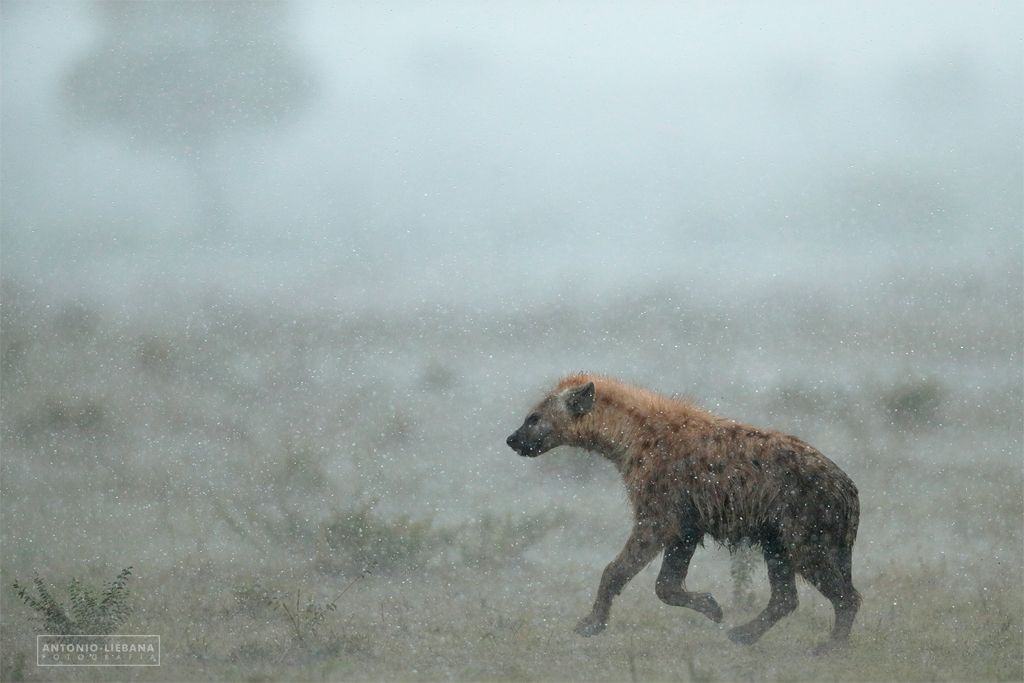
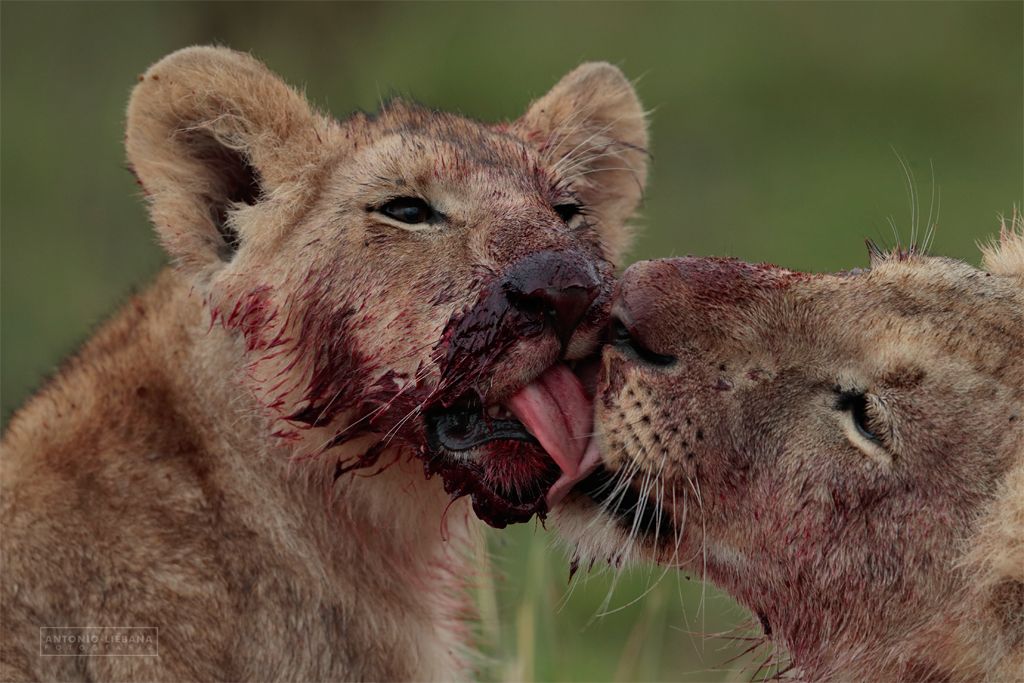
Gustavo Cherro is a visual storyteller, and more than 20 years ago, he worked as a photojournalist in different newspapers, magazines, and agencies. Today he is choosing his own stories to develop. He always tries to have a human component in the project, and he usually prefers to work in natural environments, often sports or adventures and other times with a social and human component. These activities can be in mountains, boats, jungles, swamps or in a large city, although the latter, he always prefers to avoid it.
Words and images by Gustavo Cherro

f-stop: You are known for traveling to amazing places, and always being in the field. What was this adventure about?
Gustavo: The Cordón del Plata is the "high mountain" school of Mendoza in particular and Argentines in general. A short distance from Mendoza, Argentina (70 km) we have, in those mountains, one of the few relatively "alpine" landscapes of the country; Where altitude, really big mountains, ice, and verticality are combined. It is a midpoint between the great distances and desert softnesses of the high mountain of the Northwest and the concentrated and granite moles of Patagonia.
Due to the wide range of the assignment, I decided to go alone, to have the necessary times and not keep in mind that someone was waiting for me. I wanted to show the full beauty the place, its geography, flora, and fauna
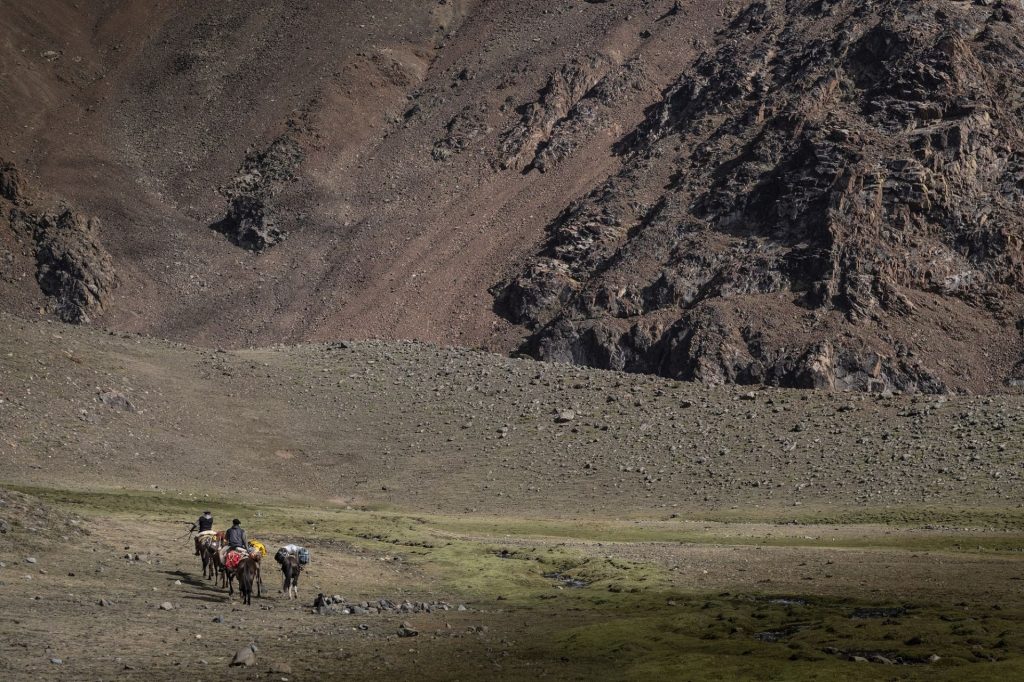
f-stop: What was your biggest challenge during the adventure, and how you overcame those challenges?
Gustavo: The aggressive weather, the height, the great distances, the cold night and its actions on the batteries of my gear and the transfer of all my equipment With respect to the weather, it is important to have the necessary equipment and knowledge, being poorly dressed can be a serious problem, the same happens during the hours of rest and cooking. The height can only be assimilated with the appropriate periods of acclimatization, sleeping, and living over 3000 meters requires that the body gets used to that and it is necessary to take the necessary time. Walking the necessary distances to take the right picture, require only training and patience, and the transfer of my equipment, in this type of exits, I entrust it to my f-stop Sukha. It is spacious, comfortable and safe.
I practice mountaineering from a young age, and I have been working on images in these conditions for many years, but every time I see myself face to face with the mountain, she teaches me how small I am, how small the problems are that I daily They seem huge and all of them are solved with a better point of view and that to avoid problems, we just have to get away from them.

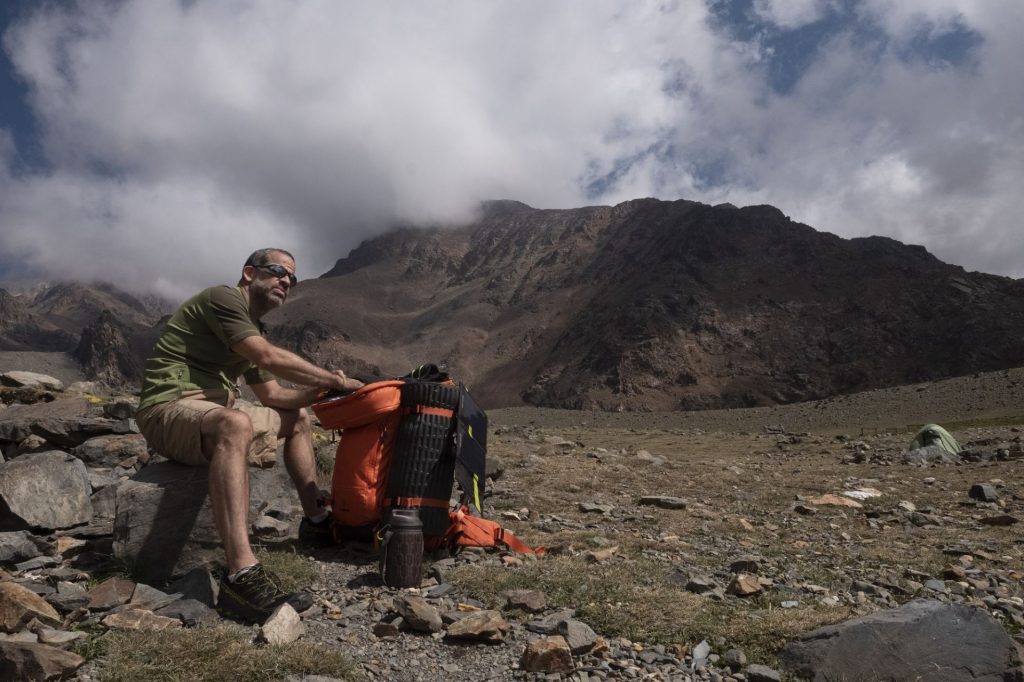

f-stop: Can you remember some of the best moments of the adventure?
Gustavo: I think seeing the wild birds of the place not fearing me and eating centimeters of me was one of those great moments. One afternoon, a young woman appeared with a baby in her arms near the camp, without a backpack, without a tent, without any equipment, left her 2-year-old baby (calculation) and started practicing Yoga, she did it for a while and then disappeared again.

f-stop: For the people that plan to visit Cordon del Plata, can you share some tips and tricks?
Gustavo: Try to travel with the least amount of equipment possible, only strictly necessary, wear the right clothes so that when the worst weather forecast happens, there is nothing left in the backpack to put on, the sleeping bag should be the best you can carry, It is the only space and moment that will give you warmth and rest. Never be alone on the mountain without communication with the outside, always have elements that serve to warn of a problem. Always protect your batteries with the heat of your body, even at night. Drink a lot of liquid and give your body the "necessary" time so that it does not suffer with height
You can find Gustavo's work on his Instagram and Facebook.
Adrian's family, his photography and his other career are three very important and consuming areas of responsibility in his life, yet the reality is what comes first is always revolving between these three core areas to ensure his life doesn’t get completely out of whack for too long. It’s really like an endless game of see-saw to keep things in balance. For those that don’t know Adrian regularly works through the challenges of busy family life, photography business and another career. You might be thinking why would he do this to himself instead of just dedicating everything he has to photography? It’s a fair question.
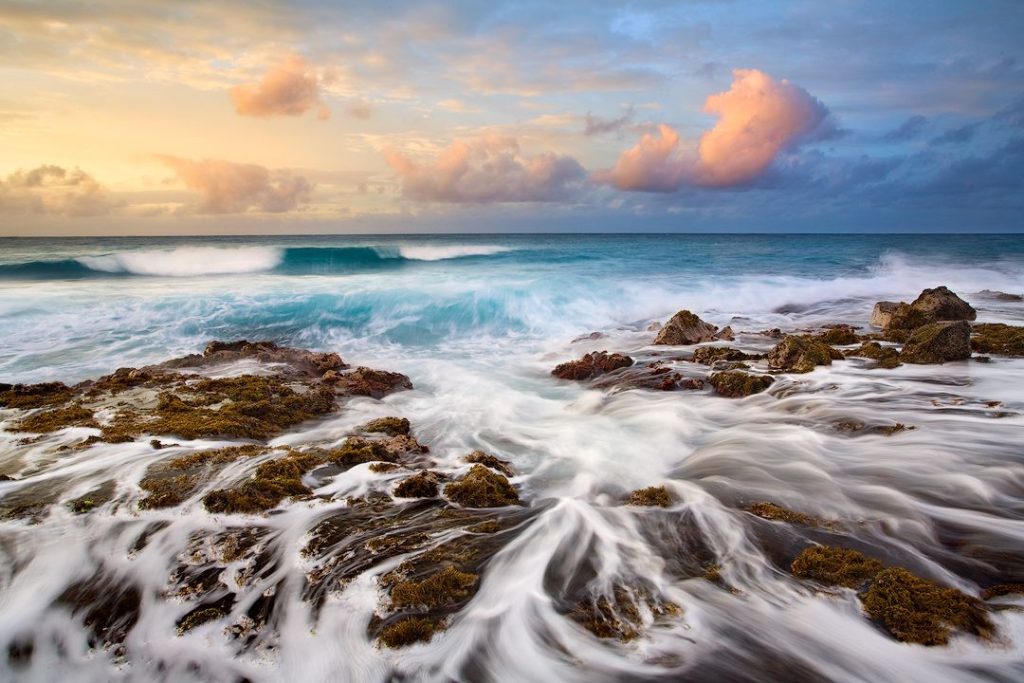
I have done a couple stints as a full time photographer over the years. For a variety of reasons I went back to doing the photo business part time while busy most days doing something quite different than photography. For the last decade I have been working in the technology industry in QA and different leadership roles. I have seen some photographers that present themselves as a full time photographer to the public eye yet when you lift up the cover you see they have a job they dislike, and photography is a way to think less about the 9 to 5 world they don't enjoy. I enjoy the industry I work in and the people I have worked with which is why I have continued balancing out the photography business with another successful career. I have also worked at places that support living an active and healthy life which does help me keep in shape and in turn the ability to be outdoors and capture photos that interest me. While my way of life isn't for everyone I am someone that normally wakes up wanting variety filled days. That is what I definitely have!
The question I have been asked over the years is how I balance it all out. Probably no surprise to anyone reading this, I am here to say there is no special sauce or magic button you can press. It takes a lot of time, putting in effort and being motivated, in order to make it work. If I don’t have all three of these going I know I will cave trying to balance multiple demanding areas of life. Make no mistake; I do understand the need for down time to recharge. When I am rundown I rest to bring my batteries back to full to keep on running.What is nice to see is when I step back and look at the last decade of photography for me. While there are have been some limitations when compared to someone that is working photography as a full time career I can still say it hasn’t slowed down my ability to produce new work, experience cool places and continue the business side from personal sales to collaborative projects.Since I know there are many other photographers out there in a similar situation I thought I would share what I have done to help make this work for me. If this can help empower even one person to continue the pursuit of photography while balancing the demands of another full-time career then I will consider my efforts writing this more than worthwhile.


Since I have another career that keeps me hopping with busy family life, there is less time to be jet setting across the planet for photo trips. Much of my time wandering outdoors for photography is in the Pacific Northwest, which fortunately isn’t short on locations to visit in any season. A number of years ago I would spend most of my vacation time on photo trips and teaching workshops. I had to find a better balance as my kids were growing and I wanted them to experience the places I was going. With the increased family trips, there is less time for me to travel further away dedicated solely to photography. While I have been fortunate to work at companies that have great work/life balance, any amount of vacation is easily taken up for new adventures. I also have been able to leverage some day-job work trips to turn them into work trips that included photography. While there are many amazing places on my bucket list to see around the world, I am content for now having a local focus for most of my dedicated photo excursions. My wife and I are already less than a handful of years away from one of our daughters graduating high school. It goes by fast. That said with the family trips we normally get out further away which does benefit my photography portfolio.

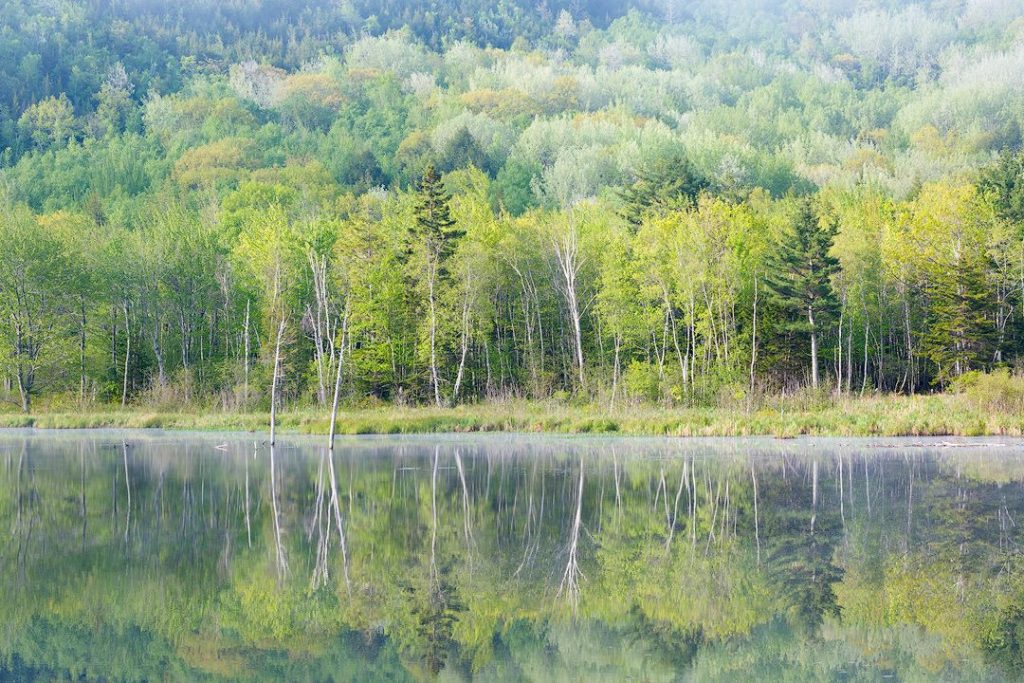
When I am heading out for a day trip, or partial day, it’s too easy to be consumed with everything that needs to be done around the house. I have experienced plenty of times before I learned my lesson where I would tell myself “just these couple things” and then I will head out. By then it’s too late and I feel consumed in the vortex that is hard to get out of. Yard work, home projects, run errands, etc. they are always calling. We may not have the most perfect looking yard in the neighborhood but I am okay with not winning the green thumb award when it allows spending more time out adventuring outside the city. Not to mention the longer we leave the flowering clover, scattered leaves, etc it’s actually better for the environment and insects. When I am busy all week at another job and haven’t had a chance to do much around the house it’s easy to feel pulled in the direction to stay home, even if no one is saying I have to do anything. Now days when I am heading out for a day trip, I start the process to head out as soon as I get up, if I haven’t already packed up the night before. Out the door with coffee in hand, and sometimes while the world around me is still asleep.


I am thankful for a supportive wife. She is the primary reason why I can have a very active corporate job, work in photography and still get family time. I have told her and I will say it here as well, people that have successful careers and that are married, often have their spouse to thank as a contributing factor. None of us are doing it alone when there is family in the picture, unless you are the one that doesn’t care to be involved with their family, which I am hoping isn’t anyone reading this.I have had the question asked over the years on how I am able to balance it all and I said if you are married you need a supportive spouse/partner. Then the follow-up question was what to do if you don’t have one. Unfortunately, I can’t help on that one! In all seriousness the hope is you are with someone that has similar interests.Not that there's anything wrong with Disneyland but we are not that family, at least not at this point. It was only this year for the first time we can remember that our girls asked when we were going to Disneyland. We said which do you prefer, going to Disneyland or a road trip in a campervan. The answer was the latter which only reaffirmed the trips we are doing together that allow me a chance to be in the outdoors to capture photos is what my family enjoys doing as well.Not to mention the opportunities that will come up with your kids being in the field with you. While my kids do not have quite the same zeal for photography as I do, they express an interest from time to time, and I use this as a chance for them to do everything from carrying gear to take the photos by means adjusting the settings and clicking the shutter. I am willing to involve them as much as they want to be.

Group or team projects and initiatives are fuel to keep inspiration alive, especially when I don’t usually have the time to forge ahead on my own as often as I would like with various ideas. I have had multiple times over the last decade where I thought life is too busy and maybe I should just stop photography for a bit. The reality is that is the wrong answer. Photography is precisely what I need to help balance out the other pieces of my life. It doesn’t mean I need to eat, sleep and breathe photography 24/7/365 yet I am reminded when I get lost in what I am doing with a camera in hand that not only am I doing what I love but it’s what I need for my mental health.I am fortunate to be a part of the Photo Cascadia team which has provided much inspiration for me and support simply as good friends. You can read the full story on how Photo Cascadia was born on our blog. We have been going strong for a decade with no end in sight. We normally have one or more projects going on at any given time. From licensing deals with major companies to gallery shows and more, there is plenty we have been able to accomplish because we are stronger as a team.If you are a part time photographer with many competing priorities outside of photography that doesn’t have balance today, think about what you can do starting tomorrow that would change this for the better. Not only will those around you be thankful, you will likely be thankful yourself.Speaking of team or group projects Photo Cascadia has recently completed an ebook on where to photograph in the Western United States based on season called Photographing Through The Seasons. You can see more about the book and the opportunity to purchase it by checking out the ebook page on our website.
You can find more about Adrian's work on his website and Instagram.
My name is Mattia Bicchi. I am a professional timelapse and hyperlapse photographer/filmmaker from Italy, however I’ve lived in London for the past seven years. I create Timelapse for big and small films production companies, such as BBC, Ford, Virgin Atlantic, Mulberry and many others.
In June I spent 17 days in Kyrgyzstan, a country you might have never hear of before (I didn’t till last August). As a Timelapse photographer, I am always looking for new or less touristy places to shoot and Kyrgyzstan it’s definitely one of them. Since mountains cover 90% of the country, the landscape is truly breathtaking. Depending on the region, you can find a wide variety of places, from alpines lakes, rocky deserts, vast valley to huge mountains, its tallest peak is 7,439m.
I fell in love with the unique landscapes and the kind, welcoming people of Kyrgyzstan.
Tourism started growing here in the last couple of years, and this country has a real potential to became a top destination for photographers, hikers, back packers and alpine enthusiasts. The tourist facilities are not quite ready for mass tourism like Iceland or Patagonia. However, that’s also the beauty of it. You can be immersed in the culture and the daily lives of the locals.
During the first part of the trip, I explored the south region around Lenin Peak, Arslanbob and Sary-Chelek. In the second part, I hiked for a few days in the Karakol Valley where I visited Ala-Kul which is an alpine lake at 3.500m and Sary-Jaz Valley close to China’s borders. I was acoompanied by landscape photographers Visit Karakol and Albert Dros.
I traveled with my trusty f-stop Loka that I’ve owned for almost 5 years. I carryied all my Timelapse kit around Kyrgyzstan, and I put this through quite a bit. We drive off-road with a 4x4, and we went horse riding, and we hiked for days to the best mountain range in Central Asia. We also experienced thunderstorms, snow, and even some sunny weather!
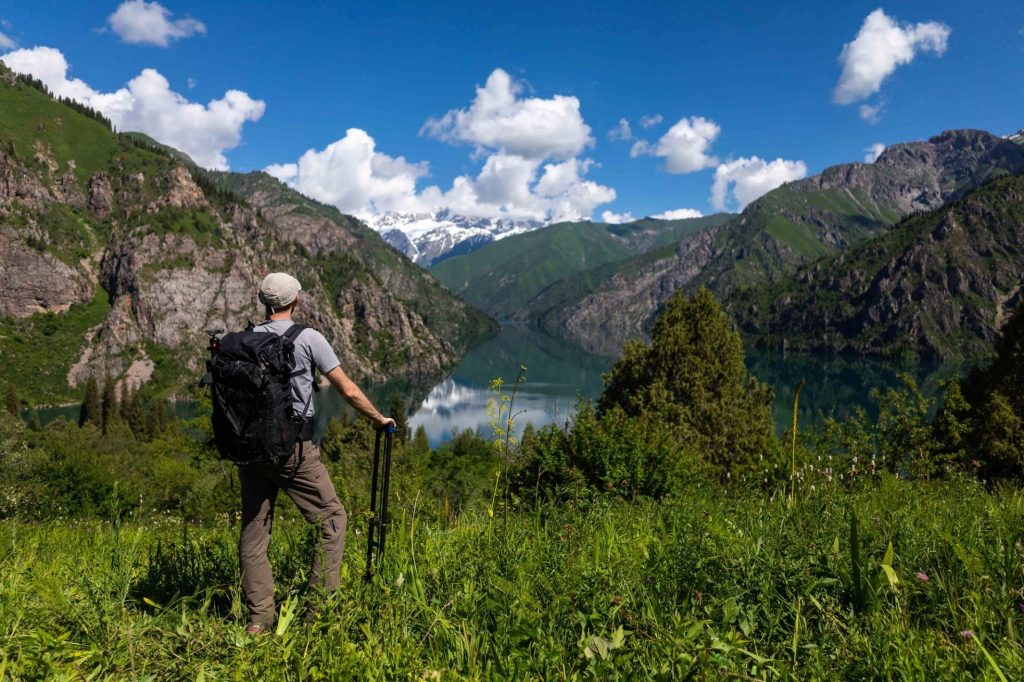
I shot the Timelapse in 8K, and I used the Sony A7RIII with various Canon lenses, 16-35 f/4L, 24-70 f/4L and 70-200 f/4L. I created the motion with the Rhino RŌV Pro Traveler and the Dynamic Perception Stage One and R.
To film the Travel Journals, I used the Sony A7III with the Samyang 24mm f/2.8 and the Zhiyun crane M.
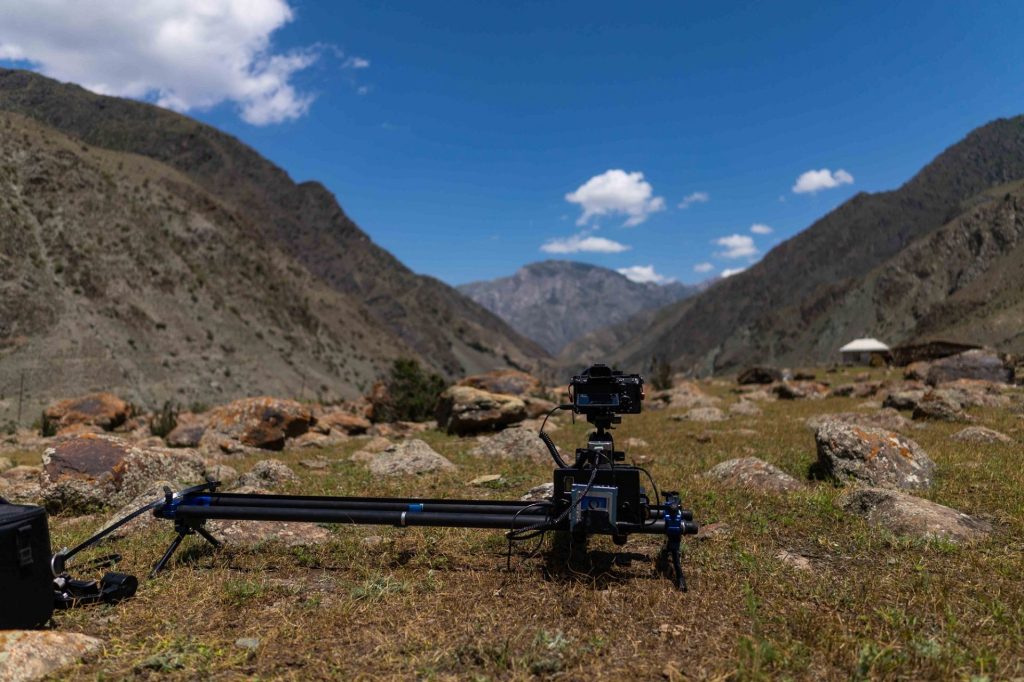
I came back with 5TB of data, 42.000 Raw files which I converted into 107 Timelapse pieces. I also made 6 Tavel Journals showing the behind the scene and the travel involved. The editing process of this content took around two months.
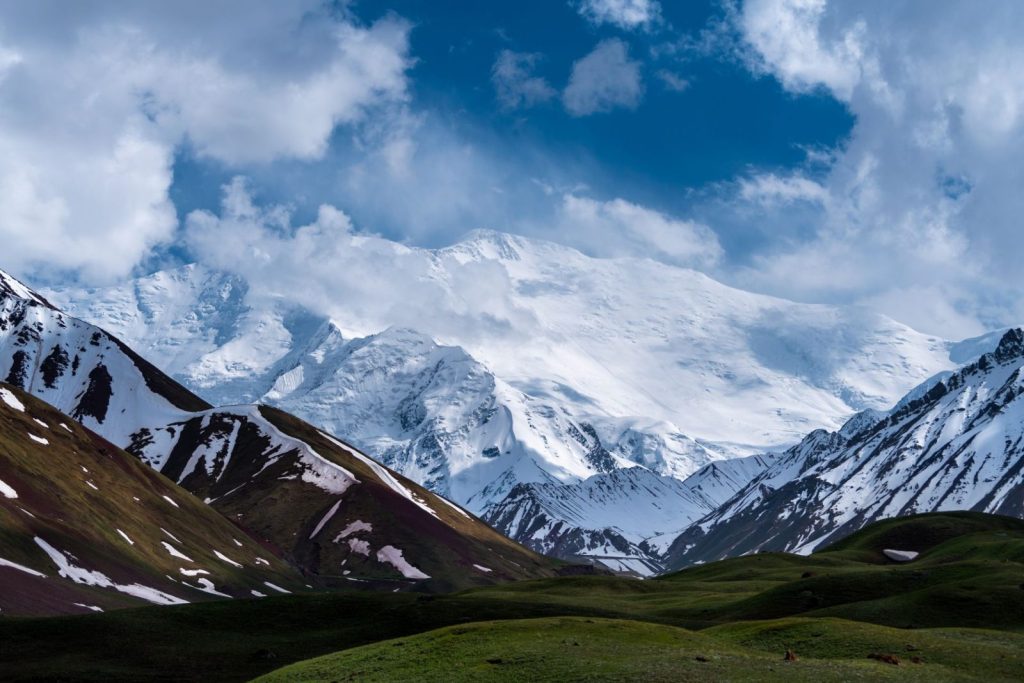

1. THINK FAST, BUT BE PATIENT
Do not panic if before the first jumps do not get good results, your mind and ability will understand the athlete's times and as the day progresses, everything will improve. Do not hurry

2. UNDERSTAND THE ACTIVITY
Try to meet the athlete, observe his movements and learn about him, if possible, interact with him and deepen that knowledge. This will help you get better results.

3. THE BACKGROUND
A stunning background can transform a simple photo into one that is extraordinary. Take advantage and be "ironic" with the environment, a rider running out of his environment will always impact more visually.

4. MAKE UP THE IMAGE
Is one of the most important aspects of a photograph, the composition of an image is what makes it great. Many times the place of the shot is predictable, and this allows us to preview and compose in our mind the image before it happens.

5.ANGLES
The best way to get cool and different pictures is to get out of the boat and shoot from a different places. from land, from some jump ramp, from some high point, even from inside the water.


6. TECHNICAL RESOURCES
Try to vary resources and techniques when photographing, use low speeds, make half screens, make sequences, choose different lenses.

In early May 2019 the United Nations held its Global Festival of Action in Bonn, Germany, to encourage its Sustainable Development Goals (SDGs) and to celebrate the progress that has been made. As part of this festival, Canon sponsored a multi-day visual storytelling workshop through its Young People Programme. The workshop was led by Canon ambassador and f-stop ICON Ulla Lohmann. We learned more about the workshop from Emma Hope, Sustainability Manager at Canon, and Ulla.
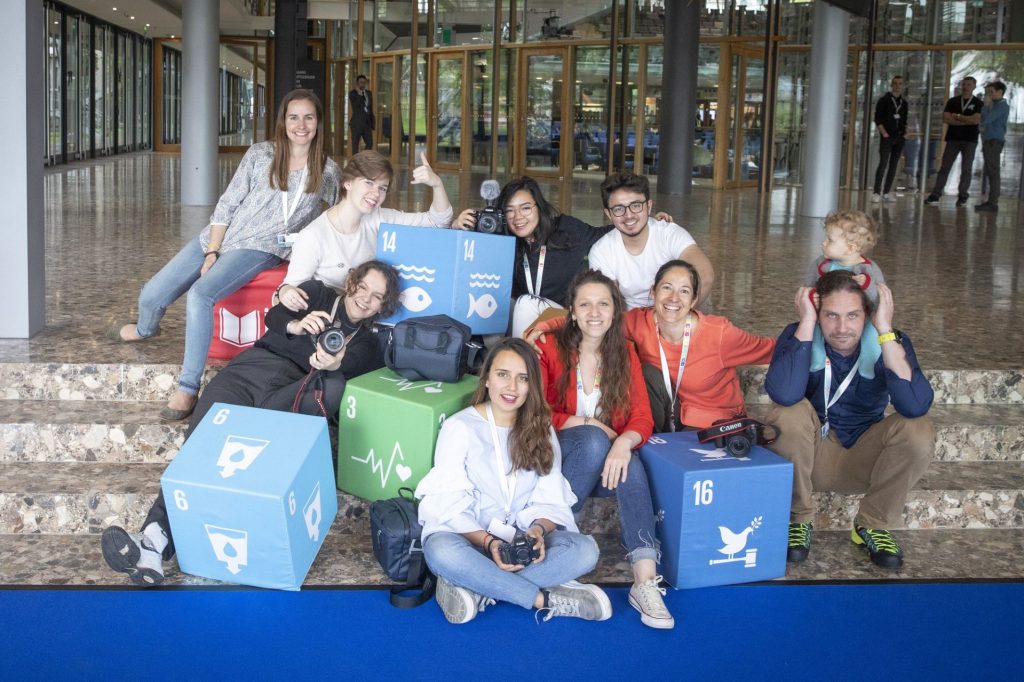
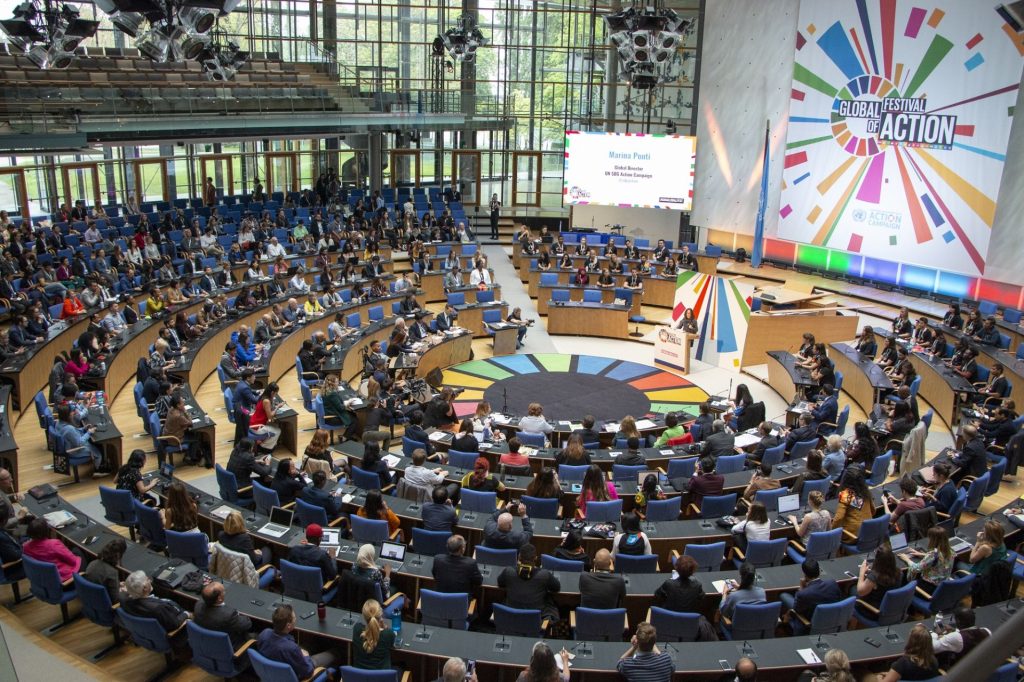
How did you learn about the UN’s Sustainable Development Goals and its Global Festival of Action? What inspired you to get involved?
Ulla – I was inspired by the Sustainable Development Goals when I was studying natural resource development in Australia. I was excited when Canon asked me to help teach visual storytelling to participants of the UN’s Global Festival of Action. For 2018, and again this year, we decided to involve Canon’s Young People Programme in the visual storytelling workshop.

What was your role, and did you have a goal before you started?
Ulla – My role in the workshop was to help the students improve their visual storytelling skills and to inspire them to continue creating stories after the workshop ended. Our goal was to produce a body of work that would tell stories of sustainable development through the eyes of a younger generation.
How many students were there and how did they get involved?
Ulla and Emma – The students were previous participants of Canon’s Young People Programme. All five of them were high school students from Germany and Belgium whom we had already worked with in 2017, 2018, and 2019. When possible, we try to provide follow-up opportunities like this to the participants, as the programme’s focus is to provide quality education and to help the generation of tomorrow harness the power of positive visual storytelling to drive change.

Where did this event take place? What did you and the participants work on? What equipment did the students use?
Ulla – The Global Festival of Action took place at the Bundestag in Bonn, Germany. This is a historical location for me, as I remember watching parliamentary sessions there when I was a child. The students worked in three groups to tell their stories in three methods. One group worked on a video, the second group worked on Instagram, and the third group worked with still images, in the manner of photo reportage. Canon donated cameras for the students to use and f-stop donated camera bags.

Did you and the participants face any challenges? If so, how did you all overcome those challenges?
Ulla – The biggest challenge was the short amount of time we had to complete and present the projects. We had to do the training, briefing, gather material for the stories, edit them, and deliver them during the festival, which was May 2-4. In the end, we managed to do all of that. The students were successful. I was very proud of them.

In what ways did the students learn and grow through this experience?
Ulla – The students already had a good idea of how a picture can tell a story. During this workshop they were able to practice what they already knew and use the new skills they learned during the workshop. They also got to work with other people their age to tell stories about issues they care about.

What did you learn from the students? How did the students inspire you?
Ulla – The students are really enthusiastic about making the world better. It was really infectious. They are very curious about the world around them and they were always asking why things are the way they are and how they can be better. I am grateful that my job allows me to be curious, ask questions, and be enthusiastic. The students reminded me how important this is. I hope the workshop we did together helps them realize that they can become storytellers in their own ways. It is all about inspiring each other.


Discount Applied Successfully!
Your savings have been added to the cart.